Revisiting Utoya
CRJ Editorial Panel Member Robert McAlister is in Oslo for the sixth Anniversary of the July 22, 2011 attack by far right extremist Anders Breivik. In this second blog Robert retraces the steps of Breivik, his victims, survivors and the response actions on Utoya Island.
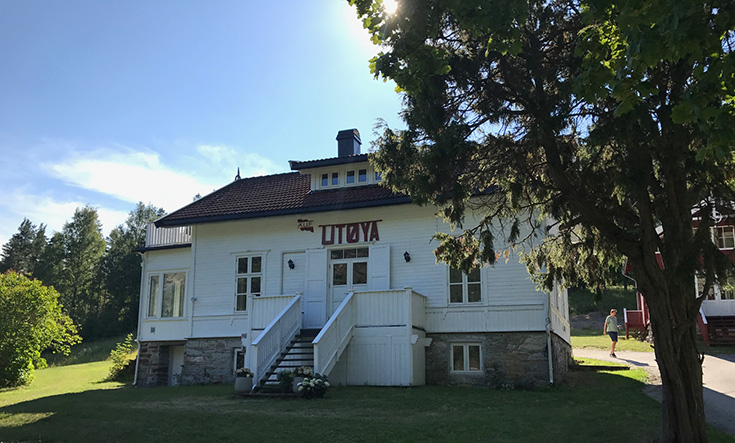
The main building on the island of Utoya, the scene of the first victims' killings
Taking the small ferry across to the island, and arriving at the jetty, you immediately see the iconic white wooden house with the red Utoya signage that was often seen in news reports in the days following the attack. This was also the scene of the first killings within minutes of Breivik's arrival.
We follow the path up the hill, passing the football pitch and towards a series of buildings, one of which is the old cafe, which has been left unchanged apart from an outer protective design symbolising the number of survivors supporting the number who died. This is called the Hegnhuset (Safeguard House) in Norwegian.
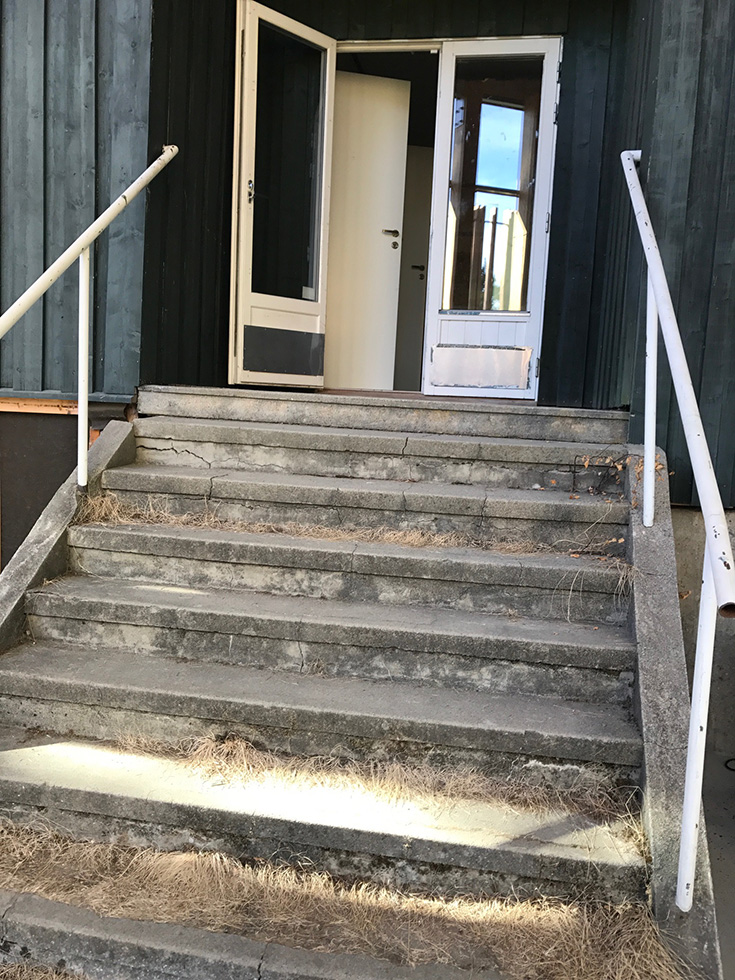
Entrance to Old Cafe within the Hegnhuset 'Safeguard House'
Being in the room where 13 young people died is sobering; a piano behind which a young victim was hiding before being shot highlights how little has been changed. But more positive was how the same number within that same area survived. Instinct, positive mindset and quick reactions saved lives that day.
One young survivor I spoke to later said to me, that she was a positive person in life before the attack, and all her inner voice kept saying was: "You are not going to die today."
Moving on, I follow a wooded path around the far side of the island, a sheer drop to the water below on my right, woods to my left. I start to find red ribbons periodically tied to the fence following the path.
Within a short distance I am already into double figures. These ribbons, of course, denote where young victims were found dead, with no means of escape or place to hide. After the attack, the police gave families the exact GPS co-ordinates of the exact location their children's bodies were found.
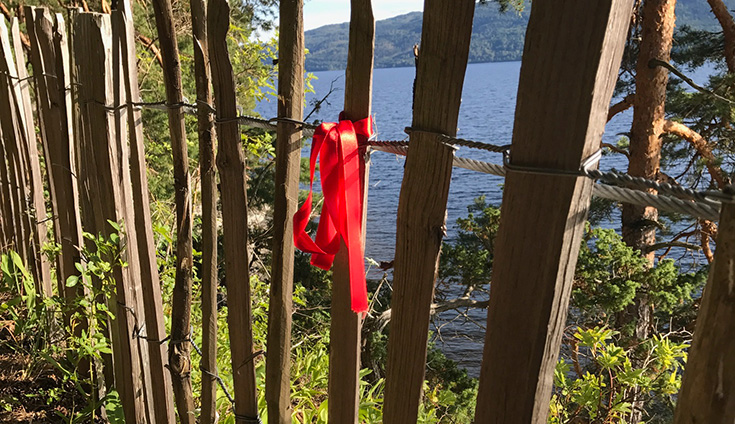
Red ribbons show where a young person fell; police gave their families exact GPS co-ordinates
The same symbols can be found everywhere on the island, which is hardly surprising as Breivik had one-and-a-half hours to hunt them down without any response intervention.
There have been many reports and media speculation on the reasons for the slow emergency response which, in hindsight, is easy to criticise and overanalyse. One thing is certain, many lessons have been learnt and this can be brought into training programmes to improve effectiveness for future crises.(See previous blog regarding the new RVTS Crisis Leadership Academy opening in December 2017).
Over the last few years, Utoya could easily have become a place of darkness and negativity. Instead, it has become a Phoenix arising from the flames, bouncing back to be a youth campsite once again, but now housing an exhibition and, most importantly, a sophisticated learning centre, which is thriving.
Sensitively refurbished buildings and award-winning designs and architecture, were all developed in collaboration and consultation with the families of the victims, a painstaking thought process that has been considered at every stage of redevelopment.
The island memorial is testimony to this process. The location was chosen by the families themselves, it’s site had two considerations – it could not be where a single victims body was found or where Breivik was arrested.
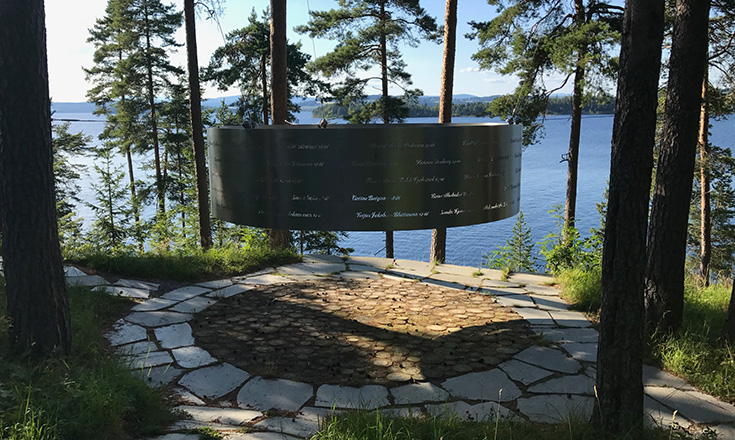
Above and below: The site of the memorial to the victims was carefully chosen - no people died here. The rays of the setting sun light the carved out victims' names, making them glow
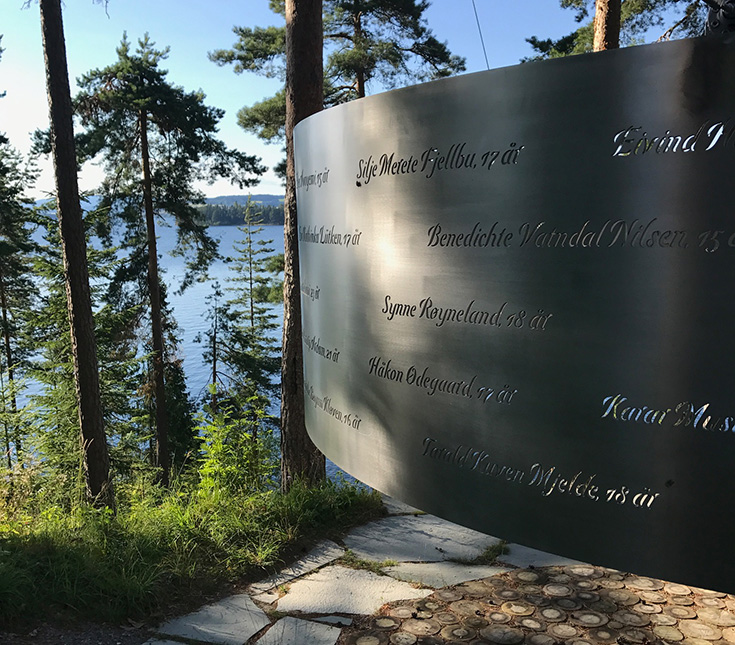
The same level of thought went into memorial itself. As a ring, it was chosen so no victim’s name inscribed is seen as more important than any other, as can be seen on a formal list of names.
The names are cut out of the steel ring, which faces the sunset – the names of the victims glow as the sun lowers, a beautiful touch to a truly thoughtful structure.
Returning to the hotel after the island visit, I have the privilege to meet and talk with the support volunteers who are made up of affected families and survivors. Mothers who lost daughters and young survivors come back to support others for the official Anniversary this Saturday.
Their stories are similar; losing their children has been devastating, their role in the support group is a form of rehabilitation but also a constant challenge.
One mother was very honest and explained that she has “lost her summers.” They , start on July 23 and she wants to stop coming every year, but cannot, however hard she tries.
Maybe this explains why the work of this group has been recognised further afield when they were contacted by families and survivors of the Bataclan Theatre attack in Paris on how to work collaboratively and promote similar support groups.
I end this two-part blogs series with a segment of a poem written on a wall on the island of Utoya, which explains the impact of this event on Norwegians:
After the 22 July
After we where blown to pieces
After Friday fell apart in our hands
After we had to learn Norwegian all over again
After the grief reached the roots of our hair
After the days began raining down over us.
Thank you to my hosts at RVTS East, Utoya Management, and the incredible affected families and survivors for this unique, memorable and informative experience.
Robert McAlister, 21/07/2017